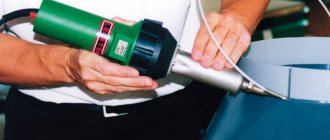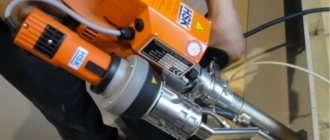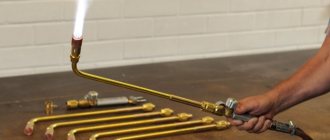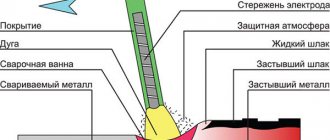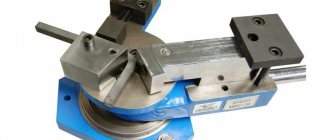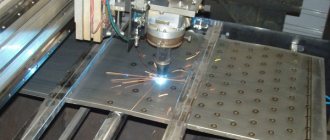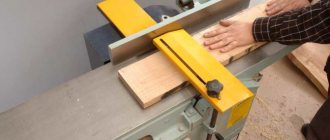Home / Accessories and parts
Back
Reading time: 2 min
0
1459
Various tools are used to connect plastic parts - welding modules, soldering irons, hair dryers and guns.
All of them are united by a common operating principle - high temperature affects polypropylene or polyvinyl chloride, as a result of which the edging softens and facilitates the joining of elements.
However, different types of welding operations require different thermal tools. The operations performed by a hot-melt gun for plastic cannot replace a soldering iron or welding module. How, for example, to distinguish the first from the last.
- General information
- Operating principle of a heat gun
- Preparing for work
- Welding
general information
First, let's understand the terms that many beginners constantly confuse. So, you can buy a welding gun (also known as a heat gun) or a hair dryer. What are the differences between them?
A soldering iron is a device designed only for soldering pipes. Its design includes a metal heating element, which heats up and melts the pipe joints. Then the pipes are connected to each other.
A welding gun (or heat gun) and a hair dryer are one and the same device. It would be more correct to call such a device simply a welding gun. Since the principle of its operation is identical to a household hair dryer, for example.
Why is a hair dryer sometimes called a gun? It's simple. Previously, hair dryers had an elongated, non-ergonomic shape. Manufacturers took this point into account and began producing hair dryers with a comfortable handle. Why did the device look like a “pistol?” For this reason, many craftsmen say “hair dryer” and “gun”, meaning the same device.
For your convenience, in this article we will use the term “pistol”, although it is erroneous.
Types of soldering irons
Most specialists to repair a plastic bumper use both standard soldering irons, which are used for soldering radios and electrical circuits, and special tools that are suitable for reconstructing bumpers.
Let's consider the characteristics of a traditional soldering iron, which is used to work with electrical appliances. This tool is available with a straight or curved tip; it can also have a variety of shapes, for example, a straight design or a pistol shape. A standard soldering iron is usually used when working with plastic, when you need to connect bumper parts by thermal action. It is also used when you need to seal seams.
Consider a soldering iron-gun hot air gun. It works by supplying air, which is heated to a temperature of 80 to 600°C. The instrument is supplemented with a special smooth thermoregulation system. In addition, a soldering iron gun usually comes with various attachments. These additional accessories provide precise direction of the flow of hot air to the place where parts are sealed. The best model of a hot air gun is a tool with a power of more than 1600 W.
Let's consider the third version of the soldering iron - a hot-air soldering station. It is a kind of complex that combines a modern model of a traditional soldering iron and a hair dryer.
The main advantage of this model of soldering iron is the fact that when working with it, the operator has the ability to adjust the operating temperature exactly in accordance with the technological task assigned to a particular operation. The model is usually supplemented with various attachments.
Features of heat guns
A plastic gun is a simple device. It consists of an electric heater and a fan, all built into a compact housing. Manufacturers produce pistols of varying power, but 1500 W and above is considered optimal. The heating temperature also depends on the model. Heat guns for home repairs can heat polymers up to 700 degrees. This temperature is sufficient for soldering most types of plastics.
The heat gun you choose must have manual temperature control. First of all, it's convenient. Secondly, it will teach you how to independently select the optimal temperature. Don't rely on automatic mode. This plastic soldering machine will become your full-fledged tool and increase your capabilities.
Tool types
To repair damage or connect broken parts of a car's surface, the following types of products are used:
- traditional soldering iron. It has a curved or straight tip (respectively, a design in the form of a gun or a pipe). Used for thermal connection of plastic fragments (including those used for cars), welding seams;
Classic soldering iron
- heat gun (hair dryer). Solders parts by supplying hot air (from +80 to +600 degrees). It has a system of smooth temperature control and is equipped with a large number of nozzles that help direct air to the place where components are soldered. Choose a device with a power of at least 1600 W;
Thermal gun for repairing plastic
- hot air soldering station. This set of tools combines a modification of a hair dryer and an ordinary soldering iron. The master, working with the equipment, can adjust the temperature in accordance with the technological task. The tools come with a large number of attachments.
Hot air soldering station
Preparatory work
For welding plastic, there are the same preparatory work as for welding metal. So don’t take working with polymers as something simple and frivolous. The quality of the connection, and therefore the durability, largely depends on preparation. And this is very important in water supply systems, for example.
Clean the surface of the parts from dirt. Degrease. Then sand the area of the future seam, if necessary. After sanding, clean the surface from any dust that has formed. This can be done using a blower device.
How to make a soldering iron tip for soldering plastic
In this review, the author shares a simple idea on how you can make your own tip-spade for a household electric soldering iron. Why is this even necessary? For example, it can be used for soldering and repairing plastic parts.
As a result, in just half an hour you can make an additional attachment for a soldering iron, which can be useful at home.
However, please note that the mesh repair method is best used on ABS plastic (this technology does not work or works poorly on PP plastic). However, if you so desire, you can experiment yourself.
Welding process
After all the parts are prepared, they need to be precisely aligned and fastened together. This can be done using clamps. Next, turn on the heat gun for welding and set the temperature. It must correspond to the melting temperature of the material from which the parts are made.
After the gun heats up, make so-called tacks in several places of the future seam. Tack welds are small weld points located around the perimeter of the joint. Using tacks you will ensure reliable fastening of parts at the initial stage. You can remove the clamps and proceed to forming the seam.
Use plastic rods to fill the joint. The rods must be made of the same material as the parts. Apply the rod to the joint and heat it with a gun. The rod will melt along with the part. As soon as the rod and the part become plastic, begin to move along the entire joint. The seam must be made from both sides of the parts, it is better to start from the back.
Avoid excessive melting of the plastic. It should be plastic, not fluid. To make the seam more aesthetically pleasing, use special rollers that smooth the joint. The seam must be smoothed before it completely cools down. If the seam has cooled down, you can additionally warm it up with a gun and smooth it out.
If special staples are used for soldering instead of rods, then select the optimal size in advance.
Soldering iron
In most cases, a plastic welding gun is used in conjunction with a soldering iron. It is used to connect fragments of a split part and also for mesh reinforcement. To successfully carry out repairs, you need to choose this tool wisely.
The main requirements for it are ease of use and short heating time to the required temperature. The last condition can be met if the soldering iron has a power of at least 100 W. In addition, it is advisable to choose a soldering iron with a wooden handle, since a plastic part may melt during prolonged use.
How the tool works
To successfully repair your car, determine what kind of plastic your car's bumper is made of. The most popular are hard and soft plastics. Fiberglass without markings is considered soft. Hard plastics are labeled ABS, GF30 and GF 15 or PAG6. You are unlikely to be able to accurately determine the type of material by appearance, so you will need to find the corresponding indication on the back of the car components.
Experts consider models made of polypropylene (PP) to be the most durable. They look aesthetically pleasing on any car and tolerate alignment or soldering well.
Next, you need to familiarize yourself with the technology of working with plastic, prepare equipment for work and wash the components of the car you are going to repair. If necessary, dismantle components. After this, the order of preparatory work for leveling the plastic surface is as follows:
- degrease the work surface and sand it;
- Apply a special primer for such work, glue and fiberglass to the product. Be sure to work in a protective suit;
- after the fabric has hardened, apply another layer of glue and distribute it evenly with a spatula;
- After the surface has dried, treat it with sanding paper;
- Apply a layer of varnish and enamel and secure it with varnish.
The result of soldering a plastic bumper
If you need to solder cracks on the surface of the car, simply clean out the crack, drill its ends and deepen the split to a depth of 5 mm to form a V-shaped groove. If the components fall apart, the parts can be connected to each other using a clamp.
Welding with a soldering iron is carried out at an angle of 45 degrees, slowly, using the most suitable nozzle. If necessary, the creation of a welding seam can occur in the same place repeatedly.
Author: Baranov Vitaly Petrovich
Education: secondary specialized. Specialty: car mechanic. Professional diagnostics, repair, maintenance of passenger cars of foreign production 2000-2015. Extensive experience working with Japanese and German cars.
